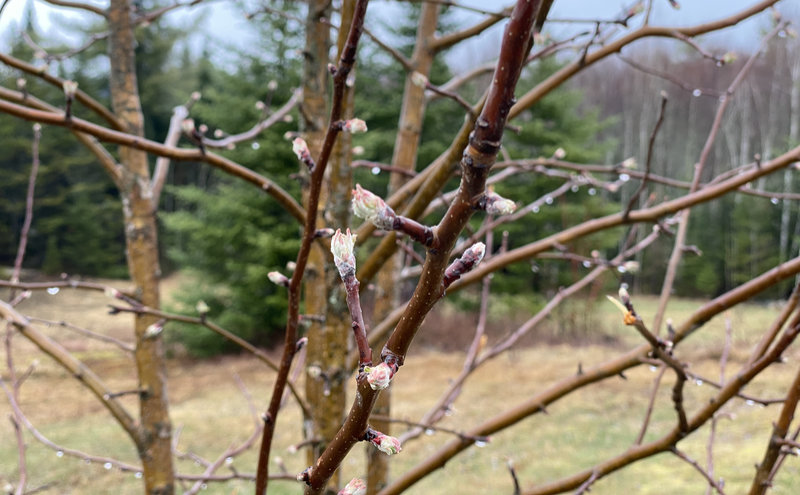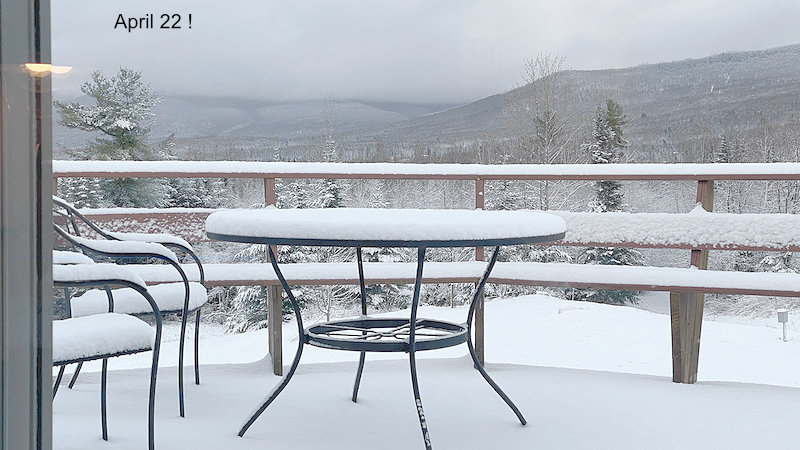Frost Damage On Fruit Trees – Critical Temperatures Chart

Frost damage to your fruit tree’s tender buds and blossoms! It’s a risk that many of us realize during Spring when temperatures can swing wildly. Do you want to know what temperatures will frost damage your blooming fruit trees?
Hint: It’s not as bad as you might think. They can survive (usually). Depending…
I have a few young apple trees that got severe frost damage a few years ago during the Spring. This resulted in zero harvest. The apple blooms were doing great… and then a sudden weather change one night. Plummeting temperatures down into the teens. And that was the end of that.
I just had someone here on the blog refer to an excellent chart sourced from Utah State University – Extension website. “Critical Temperatures for Frost Damage on Fruit Trees”.
There are great reference pictures of the fruit tree buds & blossoms in different stages of development – versus critical temperatures. This helps to closely visualize and compare with your own fruit trees state of development (buds / blossoms).
Hat tip to ‘Minerjim’ who alerted us to the chart. He also said, “Depending on the type of fruit, and the stage of blossoming, buds can survive down well below freezing very well.”
Thought this might be helpful to those of you that are facing colder (freezing) temps this spring that you are not normally used to.
The following table was first developed by Washington State University.
It lists Fahrenheit temperatures for each stage of development at which 10% and 90% bud kill occurs after 30 minutes exposure.
For example, in the chart below for Apple trees…
If your apple buds are in the early “Green Tip” stage, you might only get a 10% loss if temperatures hit 18 degrees F.
However, if the apple blossoms are in “First Pink” stage, you might lose 10% at 28 degrees F. But you may lose 90% of them if temperatures drop to 24 degrees F!!
So, it depends.
I just took the photo (up top of this post) of my McIntosh apple tree. It shows buds in the Green Tip stage – actually just pushing beyond it. Today is April 21. It gets riskier as those buds go further into bloom, especially full bloom. That’s when it seems to happen up here… Mother Nature playing tricks. We’ll see what happens this year.
Apple Tree > Bud – Blossom Frost Damage Temperatures

Pear Tree > Bud – Blossom Frost Damage Temperatures

Apricot Tree > Bud – Blossom Frost Damage Temperatures

Cherry Tree > Bud- Blossom Frost Damage Temperatures

Peach & Nectarine > Bud – Blossom Frost Damage Temperatures

(UPDATE)
So, I posted this article yesterday. I obviously JINXED myself. Today, April 22, I woke up to this:

23 Degrees! And 3 inches of snow! At the end of April? Uh-oh…
Referring to the critical temperature chart for my apple trees, it looks like (in theory) will have lost about 10%, since the buds are closer to the “half inch green”. Oh well. This is what happens…
